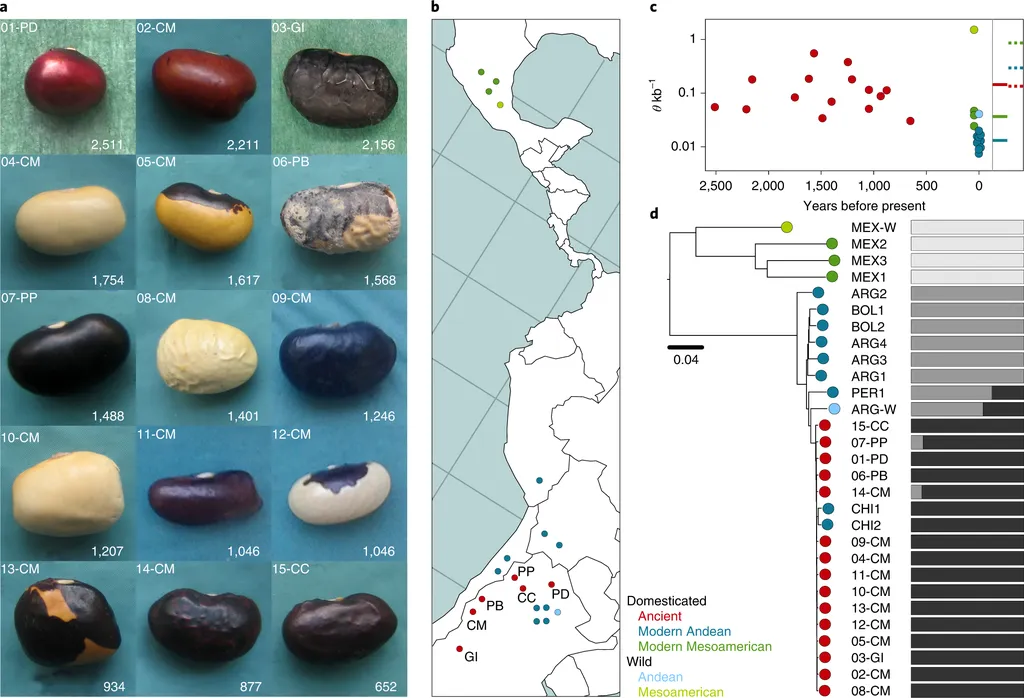In the heart of the Mediterranean, a treasure trove of genetic diversity is hidden within the humble common bean, a crop that has sustained civilizations for millennia. Researchers from the Cyprus University of Technology have recently unlocked a piece of this genetic puzzle, shedding light on the unique characteristics of Cypriot common bean landraces and heirloom varieties. Their findings, published in the journal ‘Plants’ (known in English as ‘Plants’), could have significant implications for global agriculture and food security.
Maria-Dimitra Tsolakidou, a researcher at the Department of Agricultural Science, Biotechnology and Food Science, led the team that employed DArTseq-based SNP genotyping to analyze 50 genotypes of Cypriot common beans. This cutting-edge technology allowed them to investigate 13,215 high-quality SNPs (Single Nucleotide Polymorphisms), providing a comprehensive genetic map of these beans.
The results revealed a moderate linkage disequilibrium, meaning that the genes within these beans are not strongly linked, which is good news for breeders. “This indicates a high level of genetic diversity,” Tsolakidou explained. “It means there’s a lot of potential for breeding new varieties with desirable traits.”
The study also found high incidences of private and fixed alleles, unique genetic markers that could be key to unlocking new traits. “Some varieties, like ‘Gliastro’ and ‘Stringless Blue Lake,’ showed intense genetic diversity and inbreeding,” Tsolakidou noted. “Others showed evidence of admixture, a mixing of genes that can also be beneficial for breeding.”
The commercial impacts of this research could be substantial. With a more detailed understanding of the genetic makeup of these beans, breeders can develop new varieties that are more resilient to diseases, pests, and climate change. This could lead to increased yields and improved food security, not just in Cyprus but globally.
Moreover, the unique genetic traits found in these Cypriot beans could be used to improve other bean varieties around the world. “This germplasm is a valuable resource for breeding, conservation, and future genomic-assisted improvement programs,” Tsolakidou said.
The research also highlights the importance of preserving heirloom varieties and landraces. These old varieties often contain genetic diversity that has been lost in modern, commercially bred varieties. By studying and preserving these old varieties, researchers can ensure that this genetic diversity is not lost, providing a valuable resource for future breeding programs.
The study’s findings could also have implications for the energy sector. Beans are not only a vital food crop but also a potential source of bioenergy. By developing more resilient and productive bean varieties, researchers could contribute to the development of sustainable bioenergy sources.
In conclusion, this research is a significant step forward in our understanding of the genetic diversity of common beans. It underscores the importance of preserving and studying old varieties and highlights the potential of these varieties to contribute to global food security and sustainable energy production. As Tsolakidou put it, “This is just the beginning. There’s so much more to discover and so much potential to unlock.”

